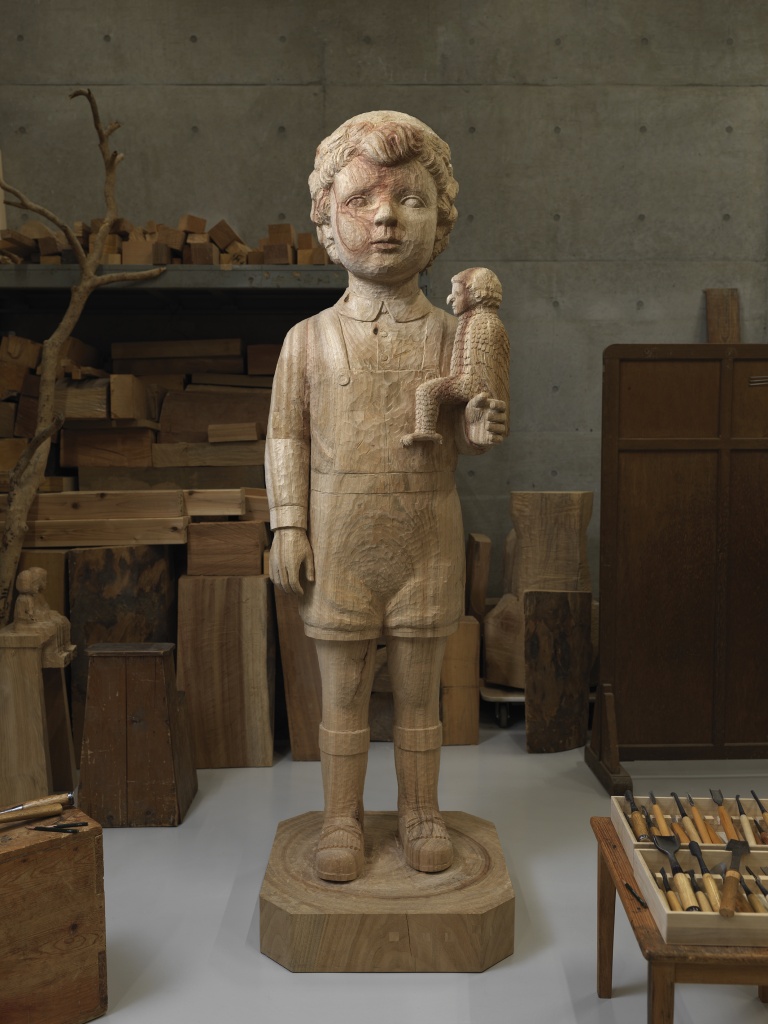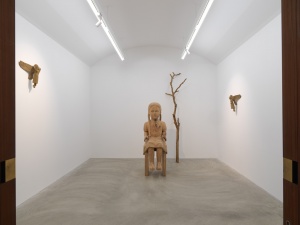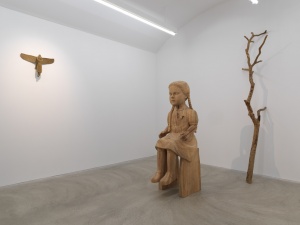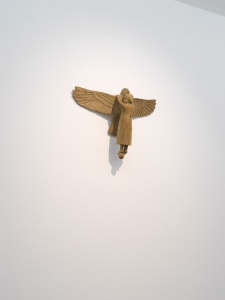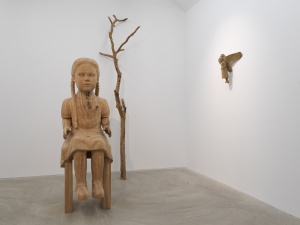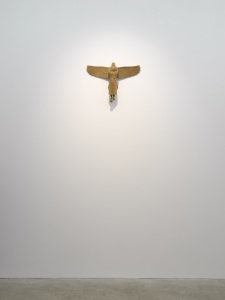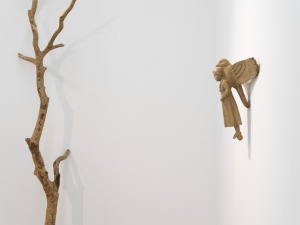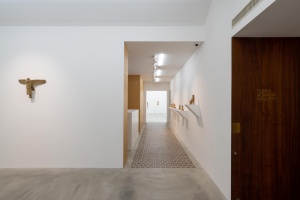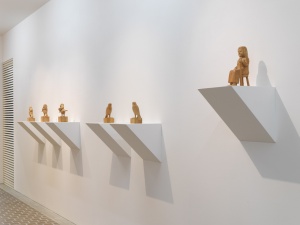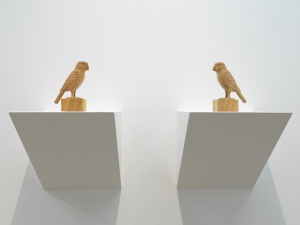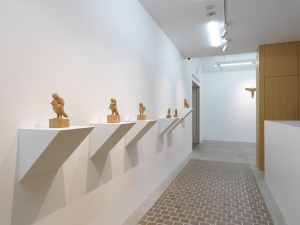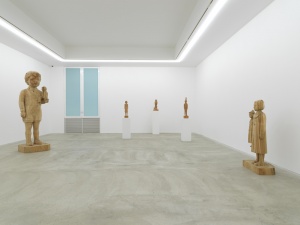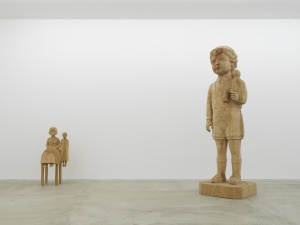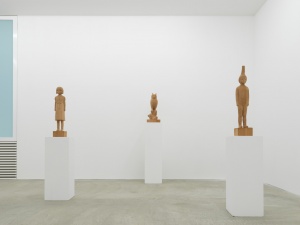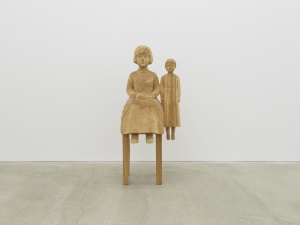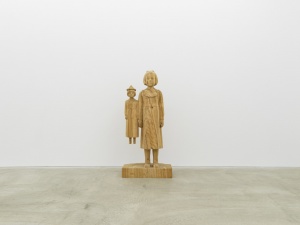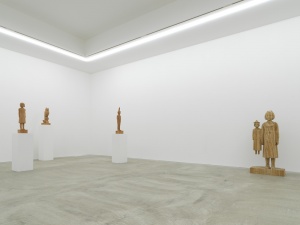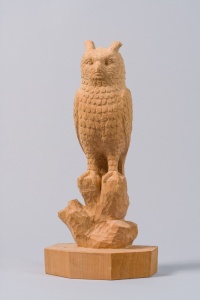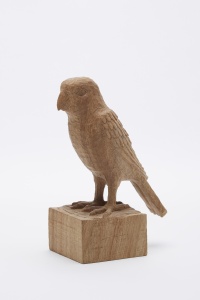【Online Viewing】
Matterport by wonderstock_photo
Tomio Koyama Gallery is pleased to present Rieko Otake’s exhibition, “Where do you come from?” The exhibition marks the artist’s first solo exhibition at the gallery in six years, and features 15 or so wood carvings including a selection of new works.
In producing her woodcarvings, Otake uses the wood of camphor, cypress, and katsura trees, working within a method of adding finishing touches to a foundation of bare, non-colored wood. Her works often express motifs such as young girls, birds, and animals, and their dignified posture and expressionless yet profoundly penetrating gaze evoke a mysterious presence reminiscent of an air of spirituality.
【About Otake’s work: strength within the ephemeral, “presences that appear close yet are distant, and cannot entirely be captured”】
With regards to he work, Otake states, “I find myself drawn to presences that appear close yet are distant, and cannot entirely be captured.” “Rather employing form as a means to explain and define, I wish to use it as a starting point to expand the world of my work.” She also mentions selecting birds as a motif for the reason that they “appear close and familiar when we look up and see them flying across the sky, but in fact they are far away.”
What can be understood from this is that Otake doesn’t limit herself to expressing human beings and birds in their mere superficial sense, but engages in attempting to excavate the compelling presence that exists within the ephemeral, or in other words, what defines the very nature of human beings and birds, for instance.
Furthermore, when approaching her works, one becomes aware that despite their delicate expression, the rough chisel marks permeate with an unexpected vigor and momentum. Such indeed are a testimony of her placing importance on the rhythm of the repeated carving motions, as well as the original appearance and beauty of the wood as a natural material, which in turn enhances the presence of the wood itself.
The birds, animals, and people that are conveyed do not depend on either one or the other, but instead each of them seemingly coexists while maintaining a sense of independence and expressing mutual recognition.
The art critic Toshiaki Minemura has commented on the expressions within Otake’s work, particularly on her past work “Tori Tori”, as follows:
The title (tori can mean both “bird” and “taking”) probably does not mean “bird catcher.” The female figures holding up a bird, clinging to a bird, or flying up to heaven with a bird all might exemplify a divided but connected relationship between a dependent being and a being that is depended upon.
(Toshiaki Minemura “As If the Branch were the Bird On the Wood Sculpture of Rieko Otake” ‘Rieko Otake Dreamlike’, Tomio Koyama Gallery, 2010)
While at first glance the works seem to be realistic depictions of their motifs, viewers will indeed find themselves drawn to their autonomous and dignified appearance and atmosphere as never seen before.
【About the new works: the uncertainty of existence, feelings towards the body and consciousness that eventually disappears】
The artist began producing the works presented on this occasion five years ago. The motifs depicted include a person reminiscent of a dog, a bird with the face of a human and an owl-like body, something bearing resemblance to a doll, and a small girl appearing to float in mid air while attaching herself to another young girl. At times larger or smaller than actual human or animal scale, the images of truth and fiction overlap and misalign, going beyond the mere realm of superficial “likeness” to stir the viewer’s imagination.
Otake states as follows regarding the title of the exhibition, “Where do you come from?”
“I wish to create works that enable viewers to also feel the impact that I experienced when I encountered them. The process of production can be described as the time required to arrive at that state.”
“I feel that my feelings towards the body and consciousness that eventually disappears including that of my own, had overlapped with my sculptural endeavors. With the acceptance that such are not eternal, perhaps my challenge is to consider what it is that I can preserve through the expressions of sculpture.”
Each indefinable as to when, where and who they depict, and containing passages of time and scenes that cannot be pinpointed, the works draw viewers into the mysterious world of the artist’s oeuvre that present the impression of dreams or memories.
Reflected in her works is perhaps that which could be described as “the uncertainty of existence” that harbors a certain ambiguity in which delicacy and strength, instability and unwaveringness, and reality and imagination coalesce.
Otake states that while at university she had found herself intuitively absorbed by the tactile appeal of woodcarving, that is, three-dimensional works that enable a physical and tactile experience without actually touching. Otake continues to produce works in the form of “presences that appear close yet are distant, and cannot entirely be captured.”
We welcome viewers to enjoy Otake’s latest artistic endeavors.
—————————————————————————————–
For press inquiries, please contact: press@tomiokoyamagallery.com (Makiko Okado)
—————————————————————————————–

